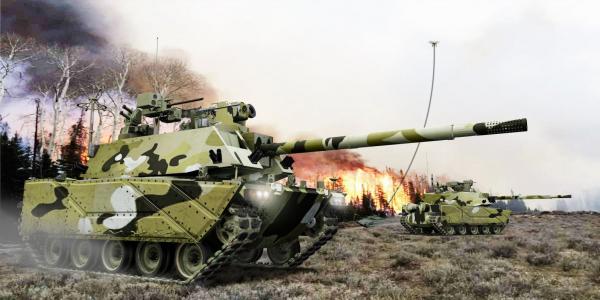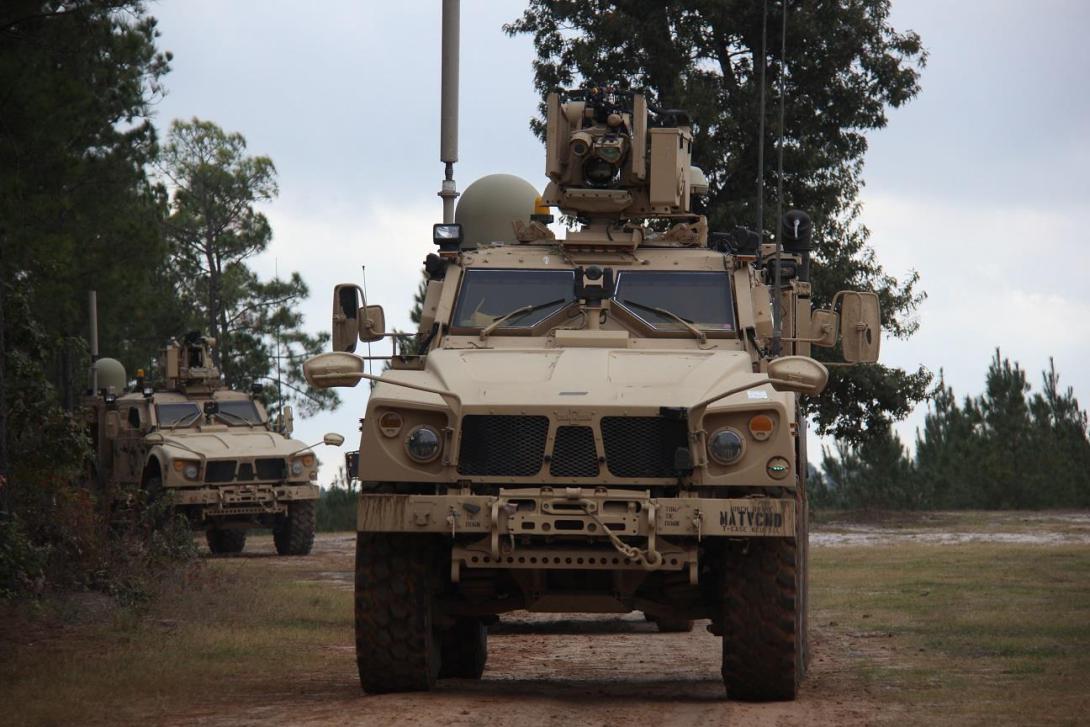Futures Command Hunts for More Wins
The U.S. Army’s recently created Futures Command achieved full operational capability in July, but improving communications with industry and delivering technologies into the hands of soldiers may be its most buzzed about achievement.
There’s a common phrase in military circles about building the plane while flying it. That phrase could easily describe Futures Command’s efforts to carry on the mission at the same time officials were hiring staff, deciding on a headquarters location, building that headquarters, educating others on the command’s mission, and handling myriad other tasks and challenges associated with establishing a brand-new command.
Service leaders announced in October 2017 they would create the command, which focuses on modernization efforts. In July of the following year, the Army announced that Futures Command would be headquartered in Austin, Texas, and just one year later it formally achieved full operational capability.
As all of that has been going on, officials also have overhauled the way the command communicates with industry. By defining the service’s needs earlier, more often and more clearly, the command is helping companies deliver better products more rapidly—in months rather than years in some cases.
For example, the Command, Control, Communications, Cyber, Intelligence, Surveillance and Reconnaissance (C5ISR) Center, one of the service’s premier technology development centers that now falls under Futures Command, is sharing sensitive operational data with vendors through cooperative research and development agreements (CRADAs) so that those vendors can more rapidly deliver cutting-edge technologies to warfighters.
Since the command’s inception, leaders have pushed for more innovation, increased prototyping and faster technology development. That innovation, speed and flexibility often come from nontraditional companies that haven’t done a lot of business with the military and may not understand why the systems they’re building would be vulnerable on the battlefield. But by sharing operational information deemed “for official use only” or classified at low levels, officials help companies make more informed decisions and build their systems more quickly.
“We have just recently leveraged those CRADAs to be able to share threat data with our industry partners. In the past, we weren’t allowed to share that classified threat data with them,” reports Michael Monteleone, who leads the C5ISR Center’s Space and Terrestrial Communications Directorate. “Instead of waiting until we do an exercise and putting something under threat and suddenly giving that industry partner a black eye because their system didn’t work, I’m sharing that threat before we even get there.”
CRADAs are agreements between governmental organizations and private companies or universities to work together on research. Both sides agree to provide funding or other resources, such as laboratory space. For example, if a company has a system it would like C5ISR Center personnel to evaluate, it can take it to the center’s lab.
“We’ll provide the lab facilities, the engineers, the subject matter experts on our side as well as articulating the Army space and how we are looking to fit their technology into that space,” explains Michael (Mike) Breckenridge, the acting associate director for the Office of Science and Technology within the C5ISR Center’s Space and Terrestrial Communications Directorate. “What we’ve tried to do with some of our recent efforts is tailor the use of the CRADA to help educate the vendors on what is currently going on from an operational perspective.”
He cites a particular case in which the center’s personnel evaluated a vendor’s radio against a particular threat. “Under the CRADA, we provided them the data on what the threat was, what some of their issues were, and how we were able to operate against their radio,” Breckenridge says.
In just six months, the vendor was able to provide an improved system for further evaluation in the Army’s Radio Rodeo, an experiment designed to assess state-of-the-art technologies capable of supporting communications for teaming warfighters with robotic combat vehicles. Officials assessed 10 industry radios for their on-the-move communications capability, including latency, resiliency, signal detectability, anti-jamming capabilities, scalability and maximum data throughput at operational ranges.
“The company operated their system during the experiment, and they showed significant improvement. We were able to show the marked improvement they made, and then we were able to show them some other [operational] scenarios they may also want to look at,” Breckenridge added.
Wayne Schoonveld, chief for the C5ISR Center’s Systems Engineering, Architecture Modeling and Simulation Division, says the innovation in information sharing is most helpful with nontraditional vendors. “One of the more important, powerful aspects of this agreement is to educate the nontraditional industry partners who want to help the Army, want to help the soldiers on the battlefield, but have a really hard time understanding what that means and how their technologies can apply,” he says. “Whether they’re a small, innovative business or a large, typical defense firm, we have a contractual mechanism where we can discuss operationally sensitive areas that will help them best shape their investment rather than having them work in a vacuum.”
Since being renamed and placed under Futures Command, the C5ISR Center has a renewed focus on integration. (SIGNAL Magazine, August 2019, page 12, “Integration Is C5ISR Center’s ...) “When I say integration, that’s what I mean. If I’m going to deliver a solution that helps enable long-range precision fires—the Army’s number one modernization priority—I’m bringing to bear the best of my sensor capabilities, the best of my intelligence capabilities, the best of my cyber capabilities, the best of my electronic warfare capabilities, the best of my communications capabilities,” Monteleone declares.
Industry officials also give the new command high marks for improved communications. David Huisenga, president and chief executive officer, Klas Telecom Government Inc., which provides ruggedized communications equipment to enable command and control, says the Network Cross–Functional Team and the Program Executive Office for Command, Control and Communications–Tactical define the capabilities they need from a system rather than dictating the nitty-gritty details of every technical requirement.
He cites a recent example in which the cross-functional team needed a communications device capable of providing certain types of data, such as mapping information, fitting into a DAGOR tactical vehicle, being used immediately when warfighters land in an area, using specific waveforms and surviving an airdrop. “They didn’t tell us it required so much computing power, so much processing and all of that. They just told us the type of data and allowed us to integrate a tactical data center with our radio solution—our Tactical Radio Integration Kit, which we call the TRIK—and fit it into a DAGOR.”
The solution, he reports, can be powered by its internal batteries, the vehicle’s direct current batteries or from the alternating current provided by a generator. “We were able to do that rapidly—within weeks. They took it out and proved the concept and then came back and told us the pros and cons, which we never had in the past. It’s very innovative and is a far more timely insertion of capability.”
Klas Telecom officials praise the Futures Command’s approach of putting systems into the hands of warfighting soldiers for evaluation rather than making decisions based on industry’s written proposals, which was the traditional program of record approach. “They have really refined that process. So, what took five years is now down to less than a year,” Huisenga says.
Chris Ericksen, chief revenue officer, Klas Telecom Government Inc., says the former process of defining technical requirements may have inadvertently locked out some vendors while also preventing industry from suggesting technologies that may have been more cutting edge. “Also, we’re starting to see who else they’re working with and the total scope of the mission, which allows us in industry to collaborate together and form partnerships. Together, we’re actually able to bring in an even better solution than we would have operating in our own specific silos.”
Despite the command’s rapid progress, Lt. Gen. James Richardson, USA, Futures Command deputy commander, says officials are hungry for additional accomplishments. “We’ve got to produce wins. We’ve got to prove ourselves.”
Without prompting, he cites the shortened timelines as a win that some people may not realize. “A few years ago, it was taking us three to five years to write a requirements document.”
Now, however, personnel from different arenas, including science and technology and acquisition, work with warfighters as one team to design, build, test and evaluate systems. Command officials expected to field the first product, the Enhanced Night Vision Goggle-Binocular, to the 2nd Brigade Combat Team of the 1st Infantry Division, Fort Riley, Kansas, in September. The system mounts to a helmet and provides a head-up display. Image intensifiers improve night vision by multiplying reflected light from the moon and stars. “That’s a win. That’s a huge win,” Gen. Richardson says. “We’re doing this in eight months.”
Command officials also expect to release a modernization strategy soon. It will focus not just on equipment but on the entirety of doctrine, organization, training, materiel, leadership and education, personnel and facilities, and it will address the need to compete with a peer or near-peer nation state. “I think it will be out within the next quarter, to be honest with you,” Gen. Richardson says.
Gen. Richardson also expressed confidence that the Army of 2028 will be a match for its most technologically sophisticated competitors. “I’m extremely confident. I take threat briefs every day. You have to know your enemy,” he says. “When I take a look at our competition right now, where they’re going in the future, and where we’re going in the future, I am absolutely satisfied,” he offers.






Comments